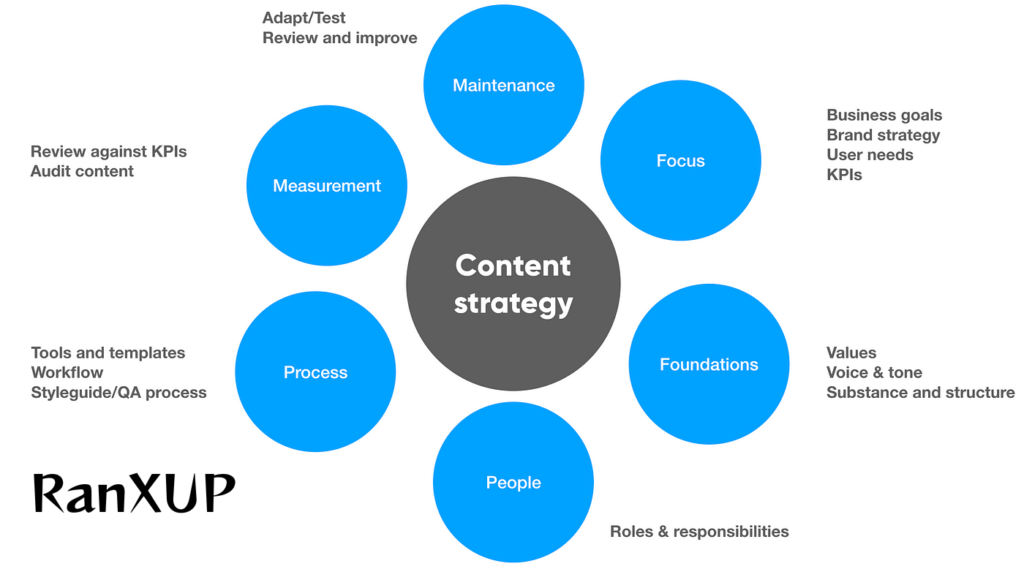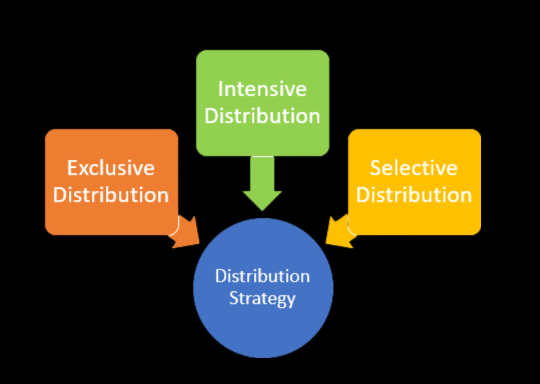In the ever-evolving digital landscape, content marketing has emerged as a powerful strategy for businesses to connect with their target audience, build brand awareness, and drive growth. However, implementing effective content marketing requires more than just creating and publishing content. It requires a deep understanding of best practices that can help businesses cut through the noise and stand out from the competition.
“Best practices in content marketing” which refer to a set of proven strategies and techniques that content marketers employ to maximize the impact and effectiveness of their content. These practices encompass various aspects, from understanding the target audience and crafting compelling content to optimizing for search engines, promoting effectively, and analyzing performance.
Throughout this article, we will explore the key best practices in content marketing that can help businesses elevate their strategies and achieve exceptional results. From understanding the target audience and developing a solid content strategy to crafting valuable content, optimizing for search engines, and effectively promoting content, we will delve into the core elements that contribute to successful content marketing.
Furthermore, we will discuss the importance of analyzing and measuring content performance, building a strong distribution network, incorporating user-generated content, and staying up-to-date with industry trends and innovations. By following these best practices, businesses can unlock the full potential of their content marketing efforts and establish a strong foundation for sustainable growth and success.
Understanding Your Target Audience:
To create effective and impactful content, it is crucial to have a deep understanding of your target audience. Here are some key points to consider when seeking to understand your target audience:
- Conduct audience research: Take the time to research and gather data on your target audience. This includes demographics, psychographics, and behavioral patterns. Use tools like market research surveys, social media analytics, and customer feedback to gain valuable insights.
- Develop buyer personas: Create detailed profiles of your ideal customers or buyers. These personas should include information such as age, gender, occupation, interests, pain points, and goals. This practice helps you humanize your audience and tailor your content to their needs.
- Identify pain points and motivations: Understand the challenges, problems, or desires that your target audience faces. By identifying their pain points, you can create content that addresses these issues and offers solutions. Additionally, tap into their motivations and aspirations to create content that resonates on an emotional level.
- Use analytics and data: Leverage analytics tools to analyze the behavior and engagement of your audience with your content. This data provides valuable insights into what types of content are performing well and resonating with your audience. Use this information to refine and improve your content strategy.
- Stay in touch with your audience: Engage with your audience through social media, email, and other channels. Encourage feedback, ask for opinions, and start conversations to gain a deeper understanding of their preferences and needs. Actively listen to your audience and incorporate their feedback into your content strategy.
Creating a Solid Content Strategy:

A solid content approach is the backbone of any successful content marketing campaign. It provides a roadmap for your content creation efforts, ensuring that every piece of content is aligned with your business goals and resonates with your target audience. Here are some key steps to consider when creating a solid content strategy:
- Define your goals and objectives: Clearly articulate what you want to achieve through your content marketing efforts. Whether it is to increase brand awareness, generate leads, or drive conversions, having specific goals will help you stay focused and measure your success.
- Conduct a content audit: Assess your existing content assets before creating new content. Identify what has worked well in the past and what needs to be improved. This will help you identify gaps and areas of opportunity.
- Develop a content calendar: A content calendar helps you stay organized and consistent with your content creation. Plan and schedule your content in advance, taking into account important dates, events, and trends that are relevant to your industry.
- Align with your target audience: Understand your audience’s needs, pain points, and interests. Create content that addresses these and provides value. Tailor your messaging and tone to resonate with your target audience.
- Vary your content formats: Experiment with different content formats such as blog posts, videos, webcasts, infographics, and social media posts. This ensures that you cater to different preferences and engage your audience in a variety of ways.
- Incorporate SEO Best Practices: Optimize your content for search engines by researching and naturally adding relevant keywords to your content. Pay attention to meta tags, headings, and URLs to improve your content’s visibility and search engine rankings.
- Measure and analyze: Track and analyze the performance of your content every day. Identify key metrics, such as website traffic, engagement, and conversions, to gauge the effectiveness of your content strategy. Make data-driven decisions and iterate your strategy based on the insights gained.
Crafting Compelling and Valuable Content:

Crafting compelling and valuable content is essential to engage your target audience and drive meaningful results. Here are some key points to consider when creating content that captivates and adds value:
- Incorporate storytelling techniques: Humans are connected to stories. Use storytelling techniques to make your content relevant, emotional, and memorable. Weave narratives that resonate with your audience and evoke emotions that align with your brand.
- Use different content formats: Experiment with different content formats like blog posts, videos, infospheres, podcasts, and interactive content. Different formats cater to different preferences and offer unique ways to convey your message effectively.
- Provide accurate and up-to-date information: Ensure that your content is accurate, reliable, and up-to-date. Do thorough research, cite credible sources, and fact-check your content. By providing trustworthy information, you build credibility and trust with your audience.
- Focus on quality over quantity: Instead of producing large amounts of content, prioritize quality. Invest time and effort into creating well-researched, well-written, and visually appealing content. High-quality content generates more engagement, and shares, and establishes your brand as an authority in your industry.
- Tailor content to meet audience needs: Understand your audience’s pain points, challenges, and desires. Create content that meets these needs and offers a valuable solution. By tailoring your content to your audience’s specific needs, you establish a deeper connection and build trust.
- Engage with storytelling and visuals: Use visuals, such as images, infographics, and videos, to enhance the storytelling aspect of your content. Visual elements grab attention, convey information more effectively, and make your content more shareable.
- Provide actionable takeaways: Give your audience actionable takeaways from your content. Whether it’s step-by-step guides, practical tips, or downloadable resources, offering tangible value encourages engagement and builds loyalty.
- Be authentic and unique: Infuse your content with your brand’s unique voice, personality, and perspective. Authenticity differentiates your content from competitors and helps you connect with your audience on a deeper level.
Optimizing Content for Search Engines:

Optimizing your content for search engines is crucial to ensure that your valuable content gets discovered by your target audience. Here are some key points to consider when optimizing your content for search engines:
- Perform keyword research: Conduct thorough keyword research to identify relevant keywords and phrases that your target audience is using to search for content related to your industry. Incorporate these keywords strategically into your content, including headings, titles, meta descriptions, and throughout the body of your text.
- Write compelling and click-worthy titles: Craft attention-grabbing titles that not only include your target keywords but also entice users to click and engage with your content. A well-crafted title can significantly impact your search engine ranking and click-through rates.
- Optimize on-page elements: Pay attention to on-page elements that can improve your content’s visibility in search results. Optimize meta descriptions to provide a concise and enticing summary of your content. Use proper heading tags (H1, H2, etc.) to structure your content and make it understandable by search engines.
- Create high-quality and original content: Search engines prioritize high-quality, original content that provides value to users. Avoid duplicating content or engaging in keyword stuffing, as these practices can negatively impact your search engine rankings. Instead, focus on creating unique, informative, and engaging content that resonates with your audience.
- Optimize for mobile devices: With the majority of internet users accessing content through mobile devices, it is crucial to optimize your content for mobile viewing. Make sure your website is mobile-friendly, loads quickly, and provides a smooth user experience across different devices.
- Use internal and external links: Incorporate internal links within your content to guide users to relevant pages on your website. Additionally, include external links to reputable sources that support and enhance the information you provide. This helps search engines understand the context and strength of your content.
- Optimize images and multimedia: Optimize images by using descriptive file names, and alt tags, and compressing them to improve page load times. Additionally, provide transcripts or captions for multimedia content such as videos or podcasts to make them accessible to search engines.
- Monitor and improve performance: Regularly monitor your content’s performance in search engine rankings and make improvements based on analytics data. Identify opportunities for optimization, such as updating outdated content, improving user experience, or targeting new keywords.
Promoting Content Effectively:

Creating great content is just the first step toward achieving your marketing goals. To ensure that your content reaches a wider audience and generates the desired results, it is essential to promote it effectively. Here are some key points to consider when promoting your content:
- Utilize social media platforms: Leverage the power of social media to share and promote your content. Identify the platforms where your target audience is most active and create engaging posts with captivating visuals, compelling captions, and relevant hashtags. Engage with your audience by responding to comments and supporting shares.
- Engage with influencers: Collaborate with influencers and thought leaders in your industry to amplify your content’s reach. Engaging with influencers can help you tap into their established audience, build credibility, and generate meaningful engagement—partner with influencers for guest posts, interviews, or social media takeovers.
- Leverage email marketing: Build an email list of interested subscribers and regularly share your content through newsletters or dedicated email campaigns. Personalize your emails based on subscriber preferences and behaviors, and include compelling subject lines and preview text to encourage opens and click-throughs.
- Engage in content syndication: Explore opportunities to syndicate your content on reputable platforms or industry publications. Syndicating your content allows you to reach a wider audience, gain exposure, and build brand authority. Ensure that the syndicated content includes proper attribution and links to your website.
- Optimize for search engines: Implement search engine optimization (SEO) strategies to improve the visibility of your content in search engine rankings. Conduct keyword research, optimize meta tags, and incorporate relevant keywords throughout your content. Build quality backlinks to increase your content’s authority.
- Reuse and share across channels: Reuse your content in different formats like videos, infographics, or podcasts to meet different preferences and platforms. Share these repurposed pieces across various channels, including social media, YouTube, SlideShare, or podcasting platforms.
- Encourage user-generated content: Encourage your audience to create and share their content related to your brand. User-generated content not only boosts engagement but also serves as social proof for your brand. Create contests, hashtags, or prompts to encourage user participation.
- Collaborate with other brands: Partner with complementary brands or businesses to co-create and promote content. Collaborations can help you tap into new audiences, enhance credibility, and expand your reach. Consider guest blogging, co-hosting webinars, or cross-promoting each other’s content.
Analyzing and Measuring Content Performance:

Analyzing and measuring the performance of your content is essential to understanding its effectiveness and making data-driven decisions for future content strategies. Here are some key points to consider when analyzing and measuring content performance:
- Set clear goals and metrics: Clearly define your goals and objectives for each piece of content. Whether it’s increasing website traffic, generating leads, or driving conversions, establish specific metrics to measure success. This will guide your analysis and help you track the right metrics.
- Monitor website analytics: Use tools like Google Analytics to track important metrics such as page views, unique visitors, bounce rate, and average time on page. Analyze these metrics to identify which pieces of content are performing well and driving the desired user behavior.
- Track engagement metrics: Look beyond page views and delve into engagement metrics like social shares, comments, likes, and click-through rates. These metrics indicate how well your content resonates with your audience and encourages meaningful interactions.
- Measure conversion rates: Determine how your content is contributing to your marketing funnel by tracking conversion metrics. Measure metrics such as form submissions, newsletter sign-ups, or purchases that can be directly attributed to your content.
- Conduct A/B testing: Experiment with different elements of your content, such as headlines, calls-to-action, or visuals, through A/B testing. Compare the performance of different versions to identify which variations drive better results and optimize your content accordingly.
- Use heatmaps and user recordings: Heatmap tools and user recordings provide visual data on how users are interacting with your content. Analyze heatmaps to understand which sections of your content are receiving the most attention and use user recordings to uncover user behavior insights.
- Listen to audience feedback: Actively listen to feedback from your audience through comments, surveys, or social media interactions. Pay attention to their preferences, suggestions, and pain points. This qualitative data can help you refine your content strategy and deliver more value.
- Continuously iterate and optimize: Use the insights gained from your analysis to iterate and optimize your content strategy. Identify trends, patterns, and content gaps, and make data-driven decisions to improve your content performance over time.
Building a Strong Distribution Network:

Building a strong distribution network is crucial for ensuring that your products or services reach your target audience effectively. Here are some key points to consider when building a strong distribution network:
- Identify target markets and channels: Research and identify the target markets and channels that are most relevant to your business. Understand where your target audience is most likely to engage with your products or services. This could include online platforms, retail stores, or specific industry events.
- Develop partnerships and collaborations: Seek out strategic partnerships and collaborations with distributors, wholesalers, retailers, and other businesses in your industry. These partnerships can help you expand your reach and tap into existing distribution channels.
- Establish clear distribution agreements: Clearly define the terms, responsibilities, and expectations in your distribution agreements. This includes pricing, payment terms, territorial rights, and marketing support. Ensure that both parties have a clear understanding of the agreement to avoid any potential conflicts in the future.
- Leverage technology and e-commerce platforms: Utilize technology and e-commerce platforms to streamline your distribution processes. This could include setting up an online store, using inventory management systems, or leveraging third-party logistics providers to handle shipping and fulfillment.
- Monitor and analyze performance: Regularly monitor and analyze the performance of your distribution network. Track sales, customer feedback, and market trends to identify areas for improvement and make data-driven decisions. Maintain open lines of communication with your distribution partners to address any issues or opportunities that arise.
- Continuously expand and optimize: As your business grows, continuously expand and optimize your distribution network. Explore new markets, channels, and partnerships to reach more audiences. Adapt your distribution strategy based on market trends, customer preferences, and evolving industry dynamics.
Incorporating User-generated Content:

User-generated content (UGC) has become a powerful tool for brands to engage their audience, build trust, and create authentic connections. Here are some key points to consider when incorporating user-generated content into your marketing strategy:
- Encourage user participation: Encourage your audience to create and share content related to your brand. This can include asking for reviews, testimonials, photos, videos, or social media posts. Make it easy for users to submit their content by providing clear information and user-friendly platforms.
- Leverage social media platforms: Social media platforms are a goldmine for user-generated content. Monitor hashtags, mentions, and tags related to your brand to discover user-generated content that you can share or repost. Engage with users by liking, commenting, and sharing their content to foster a sense of community.
- Display UGC on your website: Create specific sections to display user-generated content. This can include customer reviews, testimonials, or a gallery of user-submitted photos or videos. Displaying UGC on your website not only provides social proof but also encourages others to contribute their content.
- Run UGC contests and campaigns: Launch contests or campaigns that incentivize users to create and share content related to your brand. This can be in the form of photo contests, videos, or creative challenges. Offer attractive prizes or exclusive discounts to motivate participation and generate a buzz around your brand.
- Include and acknowledge contributors: Appreciate users who create and share UGC engage with their content and acknowledge their contributions. Like, comment, or share their posts, and consider featuring their content in your marketing materials. This encourages continued participation and strengthens the relationship between your brand and your audience.
- Use UGC in your marketing materials: Incorporate user-generated content into your marketing materials, such as social media posts, email campaigns, or advertisements. Authentic user-generated content adds credibility and relatability to your brand messaging, making it more engaging and trustworthy for your audience.
- Obtain proper permissions and rights: Always ensure that you have the proper permissions and rights to use user-generated content. Seek explicit consent from users before using their content in your marketing materials. Communicate how and where their content will be used to establish transparency and trust.
- Monitor and moderate UGC: Regularly monitor and moderate user-generated content to ensure it aligns with your brand values and guidelines. Respond promptly to any inappropriate or negative content and address any concerns or issues raised by users. Maintaining a positive and respectful environment is crucial for fostering a thriving UGC community.
Staying Up-to-date with Industry Trends and Innovations:

In today’s fast-paced environment continued participation andate with industry trends and innovations is crucial for maintaining a competitive edge and driving growth. Here are some key points to consider when staying up-to-date with industry trends and innovations:
- Regularly follow industry publications and news sources: Subscribe to industry-specific publications, newsletters, and blogs to receive the latest updates, news, and insights. Stay informed about emerging trends, new technologies, industry events, and market shifts.
- Attend industry conferences and events: Participate in industry conferences, trade shows, and seminars to connect with industry experts, thought leaders, and peers. These events provide valuable networking opportunities, and access to keynote speeches, panel discussions, and workshops that can help you stay current with industry trends and innovations.
- Engage with industry communities and forums: Join relevant industry communities, forums, and online groups to connect and engage with like-minded professionals. Participate in discussions, ask questions, and share information. These platforms can provide valuable insights, discussions, and access to the latest industry news.
- Network with industry professionals: Network with professionals in your industry through professional associations, LinkedIn, or local networking events. Building relationships with industry peers can lead to valuable conversations, shared resources, and insider information on industry trends and innovations.
- Follow thought leaders and influencers: Identify thought leaders, influencers, and experts in your industry and follow them on social media platforms, blogs, or podcasts. Their insights, opinions, and content can provide valuable perspectives and keep you abreast of the latest trends and innovations.
- Conduct market research and competitive analysis: Conduct regular market research and competitive analysis to understand the landscape, identify emerging trends, and track competitors’ strategies. Analyze market reports, consumer surveys, and competitor activities to gain insights into industry shifts and opportunities.
- Invest in continuous learning and professional development: Dedicate time and resources to continuous learning and professional development. Attend webinars, workshops, or online courses to enhance your knowledge and skills. Stay updated on new technologies, tools, and best practices relevant to your industry.
- Foster a culture of innovation within your organization: Encourage a culture of innovation within your organization by promoting creativity, collaboration, and openness to new ideas. Foster an environment where employees are encouraged to explore new trends, experiment with new technologies, and share their insights and knowledge.
Conclusion:
Implementing best practices in content marketing is a vital ingredient for driving growth, engagement, and long-term success. By understanding your target audience, creating a solid content strategy, crafting valuable content, optimizing for search engines, promoting effectively, analyzing performance, building a distribution network, incorporating user-generated content, and staying updated with industry trends, you can elevate your content marketing game and achieve your long-term growth objectives. Embrace these best practices and watch your content marketing efforts yield consistent and significant results.
FAQs:
Q: What is the importance of implementing best practices in content marketing?
A: Implementing best practices in content marketing is important because it helps drive traffic to your content and build an audience. Best practices ensure that your content is effective in attracting, engaging, and helping your target audience. Following best practices can lead to more customer engagement, increased budget allocation, and improved marketing success.
Q: How can I understand my target audience better for effective content marketing?
A: To understand your target audience better, you can survey your existing customers, research industry trends, and create audience personas. Conduct market research and competitive analysis to gain insights into your target audience’s preferences, pain points, and behaviors. Engage with your audience through social media, forums, and customer feedback to gather valuable insights and feedback.
Q: What are the key elements of a solid content strategy?
A: Audience personas: Identify and understand your target audience to tailor your content to their needs and preferences. Brand voice and content type: Define your brand’s voice and determine the type of content that resonates with your audience. Informative and valuable content: Create content that is informative, valuable, interesting, and engaging to your target demographic. Constant tweaking and optimization: Continuously analyze and optimize your content strategy based on the success of each post.
Q: How can I create compelling and valuable content that engages my audience?
A: Understand your audience’s needs and pain points to create content that addresses their challenges and provides solutions. Use storytelling techniques to make your content relevant and emotionally engaging. Incorporate visuals, such as videos or infographics, to enhance the appeal and shareability of your content. Provide practical tips, insights, and actionable advice that your audience can apply in their lives or work.
Q: What are some effective techniques for promoting content?
A: Utilize social media platforms to share and promote your content, engaging with your audience through captions, visuals, and hashtags. Collaborate with influencers and thought leaders in your industry to amplify your content’s reach and build credibility. Leverage email marketing to share your content with interested subscribers and personalize your emails based on their preferences. Repurpose your content into different formats and share it across various channels to cater to different preferences and platforms.
Q: How can I measure the performance of my content and make data-driven decisions?
A: Use website analytics tools like Google Analytics to track metrics such as page views, unique visitors, bounce rate, and time on the page. Monitor engagement metrics like social shares, comments, and click-through rates to gauge the effectiveness of your content. Set clear goals and metrics for each piece of content and regularly evaluate its performance against those goals. Conduct A/B testing to experiment with different elements of your content and compare their performance.
Q: How do I build a strong distribution network for my content?
A: Identify target markets and channels where your audience is most active and engage with them. Develop partnerships and collaborations with distributors, wholesalers, retailers, and other businesses in your industry. Leverage technology and e-commerce platforms to streamline your distribution processes. Showcase user-generated content on your website to build brand authority and encourage engagement.
Q: How can I incorporate user-generated content into my content marketing strategy?
A: Actively encourage your audience to create and share content related to your brand through contests, hashtags, or prompts. Leverage social media platforms to monitor and share user-generated content, engaging with users and fostering a sense of community. Showcase user-generated content on your website to provide social proof and encourage others to contribute their content.
Q: What are the benefits of staying up-to-date with industry trends and innovations in content marketing?
A: Staying up-to-date with industry trends and innovations helps you remain competitive and adapt to changing market dynamics. It allows you to identify new opportunities, technologies, and strategies that can enhance your content marketing efforts. Being aware of industry trends helps you anticipate customer needs and preferences, allowing you to deliver more relevant and timely content.
Q: How can I ensure consistent quality in my content?
A: Developed a content marketing strategy that outlines your brand’s voice, content type, and quality standards. Set clear guidelines and standards for content creation, including grammar, tone, and formatting. Conduct regular quality checks and proofreading to ensure that your content is error-free and meets your brand’s standards. Invest in capable content creators who can consistently produce high-quality content.

